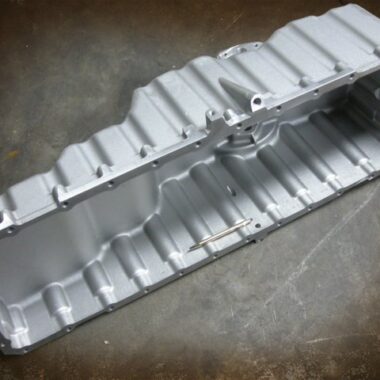Opening Excellence: Aluminum Casting Techniques & Tips for Superior Results
Wiki Article
Study the World of Aluminum Spreading: Understanding the Various Techniques
Aluminum casting is a basic procedure in the manufacturing sector, with different methods employed to develop specific and complex elements. Recognizing the various techniques made use of in light weight aluminum casting can supply important insights right into the capabilities and constraints of each method. From the traditional sand spreading method to the innovative die casting process, each technique supplies one-of-a-kind benefits depending on the demands of the project. Exploring these diverse approaches can supply a detailed view of the opportunities within the globe of light weight aluminum casting and how each method adds to shaping the modern-day manufacturing landscape.Sand Spreading Method
Sand casting, a widely-used method in light weight aluminum casting processes, involves creating molds made of compressed sand for putting molten steel. Once the mold and mildew is ready, it is firmly put in a flask and molten aluminum is poured right into the tooth cavity.After the steel has cooled down and strengthened, the sand mold and mildew is damaged away to expose the light weight aluminum spreading. Sand casting permits the manufacturing of complicated forms and big components that might be costly or challenging to create making use of various other methods. It is also a sustainable technique as the sand can be recycled and used multiple times, reducing waste in the spreading process.
Long-term Mold Strategy

One substantial advantage of the Irreversible Mold Strategy is the boosted dimensional accuracy it supplies. The metal mold and mildew permits tighter tolerances and finer information in the final aluminum castings contrasted to sand spreading approaches. This accuracy makes it a preferred choice for applications where tight dimensional control is critical, such as in the auto and aerospace markets.

Pass Away Casting Process

Financial Investment Casting Approach
Making use of a precision spreading approach, Financial investment Casting Strategy entails developing complex aluminum parts by putting liquified steel right into a ceramic mold. This procedure, likewise referred to as lost-wax spreading, begins with the creation of a wax pattern of the wanted component. This wax pattern is then covered with a ceramic product to develop a covering. As soon as the ceramic covering is solidified, it is warmed to eliminate the wax, leaving behind a hollow ceramic mold and mildew.Financial investment spreading is commonly made use of for manufacturing parts in markets where detailed styles and limited resistances are called for, such as aerospace, automotive, and medical devices. The adaptability and precision of the Financial investment Casting Strategy make it a beneficial method in the globe of aluminum spreading.
Lost Foam Spreading Method
Having explored the complex accuracy of Investment Casting Technique, the focus currently changes to the cutting-edge approach of Lost Foam Spreading in aluminum component manufacturing. Lost Foam Spreading, additionally called evaporative pattern casting, is a modern-day strategy where a foam pattern of the wanted component is created and afterwards covered with a refractory material. The coated foam pattern is after that hidden in sand, and molten aluminum is put into the mold. As the metal fills the mold and mildew, the foam vaporizes due to the heat, leaving a clean tooth cavity in the form of the desired part.Among the major advantages of Lost Foam Casting is its capacity to create intricate forms with complex information, typically in a single piece without the requirement for added machining. This approach is additionally recognized for its high dimensional precision and smooth surface area coating. Additionally, Lost Foam Casting is an economical procedure as it reduces the need for cores and enables the production of light-weight components. Despite its benefits, Lost Foam Spreading calls for careful control of the casting process to avoid issues and redirected here make certain quality components.
Final Thought
To conclude, aluminum casting provides a selection of methods such as sand casting, long-term mold and mildew technique, die spreading, financial investment casting, and shed foam casting. Each approach has its very own advantages and applications, making aluminum casting a flexible and extensively made use of process in different markets. Recognizing the differences between these techniques is critical in selecting the most suitable casting method for certain manufacturing needs.Sand casting, a widely-used method in aluminum casting processes, includes producing mold and mildews made of compressed sand for putting liquified steel. aluminum casting.The Irreversible Mold And Mildew Strategy, like sand spreading, is an additional widespread approach used in light weight aluminum spreading procedures, supplying distinctive benefits in terms of mold and mildew reusability and dimensional precision. The steel mold enables for tighter tolerances and finer details in the final aluminum spreadings contrasted to sand spreading techniques. The two primary types of die casting are cold chamber pass away spreading and warm chamber die casting, each suitable for different kinds of light weight aluminum alloys.In final thought, aluminum casting offers a variety of approaches such as sand spreading, long-term mold technique, pass away spreading, investment casting, and shed foam spreading
Report this wiki page